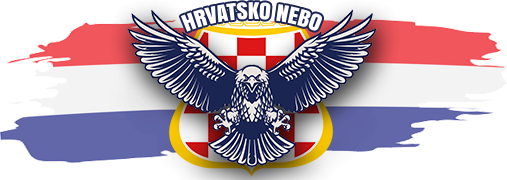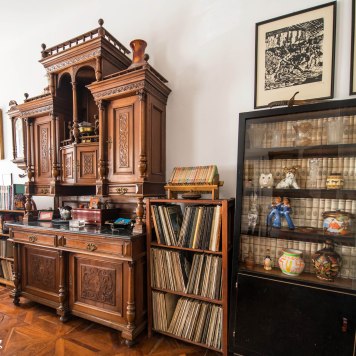Varaždin: A 20 Year Capital
Some cities have their histories inextricably linked with natural disasters. Sometimes these disasters engulf and destroy those cities while other times they shape them for better. Varaždin definitely belongs to the latter category.
In 1756, as Zagreb was reeling from the effects of battles with Turks along with frequent fires and plagues, the Croatian government relocated its capital from that troubled city to Varaždin in the north. The town, which was inhabited by craftsmen and small tradesmen till now, suddenly became the centre of political power. The arrival of nobles, religious leaders and administrators was accompanied by a flurry of construction activities in which many palaces, mansions and churches were built in and around the town centre. Alas, this era of power, prosperity and progress did not last long. In 1776, a great fire ravaged the town and destroyed almost 80% of its buildings. This resulted in the capital getting shifted back to Zagreb and Varaždin’s period of fame as the capital of Croatia was brutally cut short.
The town was slowly rebuilt and renovated and it also expanded with time. Varaždin could not become what Zagreb is – a modern vibrant capital, but what it did become is a charming city with a gorgeous cobblestoned centre full of wonderful buildings. This historic core is what we explored in the second half of our third day in Croatia after spending the first half at the fairytale castle of Trakošćan.
A QUICK STOP AT VARAŽDIN CEMETERY
We left Trakošćan Castle at 2 p.m. and an hour’s drive through serene countryside consisting of forests, farms and small villages brought us to Varaždin Cemetery on the outskirts of the city. This cemetery, designed as a garden in the early 20th century, was mentioned as a ‘must see place’ in many of the posts we read while preparing our itinerary. Thus, we had high hopes from it. But after visiting, we felt it was a bit of a letdown. Sure, the setting was nice with neatly trimmed hedges and trees arranged in geometrical patterns, but it was nothing extraordinary. As far as burial places are concerned, we are yet to come across one better than Alyscamps.

Inside the cemetery, we saw a burial ceremony taking place involving officers in uniforms. It felt like we were intruding by even being in that place at such a time, so we left the cemetery quickly and drove to our apartment.

APARTMENT MAJNARIC – A LITTLE MUSEUM
We stayed at some superb apartments during our entire trip but Apartment Majnaric was hands down the most interesting of them all. The owner of the apartment was an ardent devotee of Lord Krishna and always greeted us with Hare Krishna. While most of our apartments in Croatia were prim and proper, this one had more of a bohemian feel about it. In fact, with so many artefacts, books, paintings and furniture displayed, the apartment looked more like a small museum than a house. For us, it was a fantastic experience living in such a place.
We would have loved to dedicate a couple of hours to explore the apartment in detail but it was getting late so we just kept our luggage and started our tour of the city centre by 4:15 p.m.
THE CITY OF PALACES
Varaždin’s city centre must hold a record for the number of palaces in a given area. It certainly looked like that to us since after every few steps there was a palace. And if a palace took too long to show up, there was always a church as if to mockingly ask – ‘did you really think you could walk by this street quickly?’ It seemed like we were walking through an open-air museum of architecture and it is a testament to the beauty of the place that a route, which could be easily covered in 30 minutes at a leisurely pace, took 3 hours of our time; that too when we did not go inside most of those buildings. The other great thing about the city centre was that it was entirely pedestrianized and largely tourist-free.
Our route started from King Tomislav Square, the city’s main square surrounded by some elegant buildings chief among which were the Town Hall and the Drašković Palace. The Drašković Palace holds an important place in Varaždin’s history as it served as the residence of Croatian Ban (governor) when the city became the capital.


Just off the square was the Varaždin cathedral which was the only building that we went inside during our entire tour. The standout features of this pretty 17th century cathedral were its main altarpiece and the elaborately carved doors.


After visiting the cathedral, we had lunch at Restaurant Angelus in the peaceful and verdant setting of Vatroslav Jagić Park. Once done with lunch, we crossed this small but beautiful park and reached the Croatian National Theatre. While no match for its counterpart in Zagreb, the idyllic setting of this building along the park makes it a popular spot with the locals.



The next stop on our route was the large Capuchin Square which gave us a perfect view of the 19thcentury Erdödy Palace with its distinctive pink white facade. We retraced our steps and reached the imposing gray building of St. Nicholas Church which was built in 1761 on the foundations of an older church.
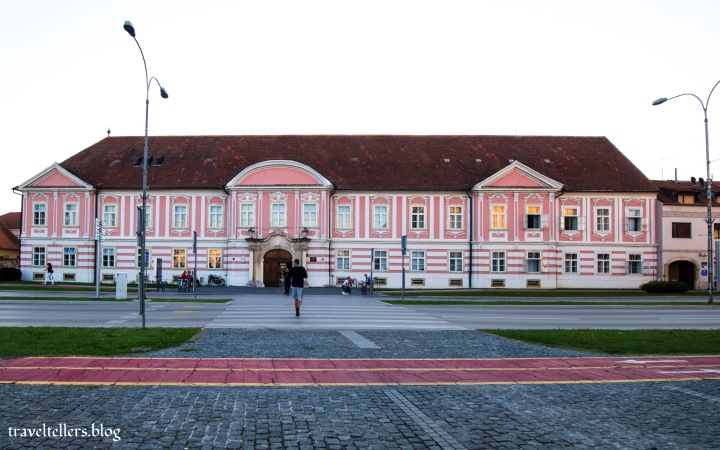

Passing these structures we reached the Franciscan Square – another square lined with impressive medieval era buildings. The first of them was Herzer Palace. This palace, constructed in 1791, has an interesting origin story. Rather than being built by nobles, this palace was built by a family who earned their wealth from operations of the local post office. Today, this palace houses an insect museum and is a part of the trio of palace-museums in Varaždin.

Just adjacent to Herzer Palace was the Franciscan Church with its distinctive yellow facade and a bell-tower which is the tallest in Varaždin. On the wall of the church facing the square was a beautifully painted sundial, while in front of the church’s entrance was a bronze statue of Gregory of Nin which is a smaller replica of the main statue situated in the city of Split. It is said that rubbing the statue’s big toe brings luck and it certainly seemed to be a widely held belief as the big toe of the statue was gleaming from all the rubbing over the years. Right opposite the Franciscan church were two more palaces – the pink and white Varaždin County Palace and the smaller but prettier Patačić Palace with its yellow and white facade.

From the Franciscan Square we walked to the Square of Traditional Crafts. It is a small square where one can see men and women practice various crafts like hat-making, weaving, candle making etc. At the time we visited, only the hat-maker’s shop was open. Directly opposite, towering over the square, stood the early 18th century Ursuline Church.
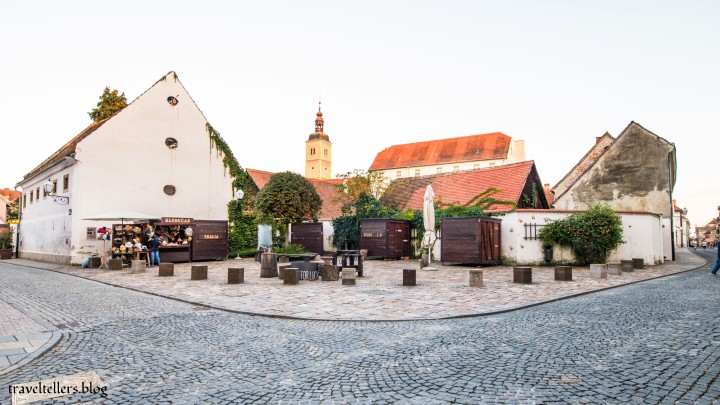

Just a few steps away from the Square of Traditional Crafts was the crowning jewel of Varaždin’s architectural heritage – the Stari Grad. You will read about it later since it deserves a separate section.
We finished our tour at Miljenko Stančić Square. Right next to Stari Grad, this was the busiest square of the city and carried a wonderful vibe with people enjoying their food and drinks in the most picturesque of settings. This square was also the site of a very distinctive Sermage Palace. This palace is the second of the trio of palace-museums and is used to display a collection of paintings.


STARI GRAD
Stari Grad – which literally translates as ‘old town’ – is the Varaždin’s medieval castle. With the whitewashed exterior, red tiled roofs and grassy fields on all sides, the castle looks postcard perfect. Stari Grad was originally built as a defensive structure and over the centuries was further fortified with the addition of towers, walls and moats the remains which are visible even now. Among the fortifications, the best preserved is a watchtower with a drawbridge.

During its heydays the castle served as the residence of many different aristocratic families. Today it is the city museum where thousands of items related to everyday life of Varaždin nobles are displayed. Stari Grad is the last of the trio of palace-museums in Varaždin.
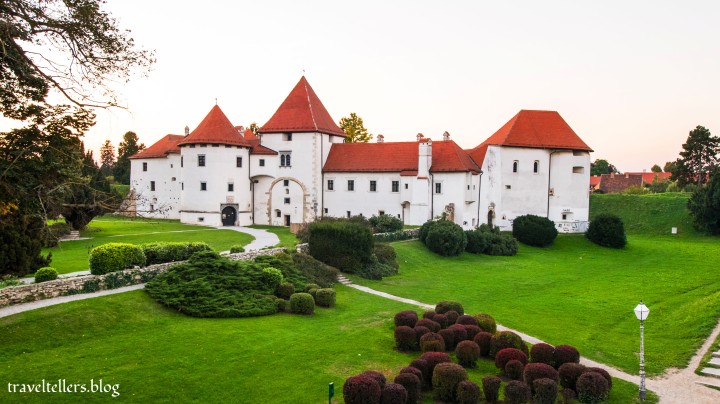
One thing that really disappointed us was that some people had defiled this majestic monument by writing on it with black ink, especially on its backside. It seems like this practice of spoiling monuments is not just limited to India.
A STROLL IN THE NIGHT
Since our apartment was very close to the centre, we decided to take another round of the city in the night too. We are glad that we did that since the city became even more magnificent during the night and with so few people around it felt like we had the entire area to ourselves. Here are some of our night shots.




Traveltellers.blog/https://traveltellers.blog/Hrvatsko nebo
